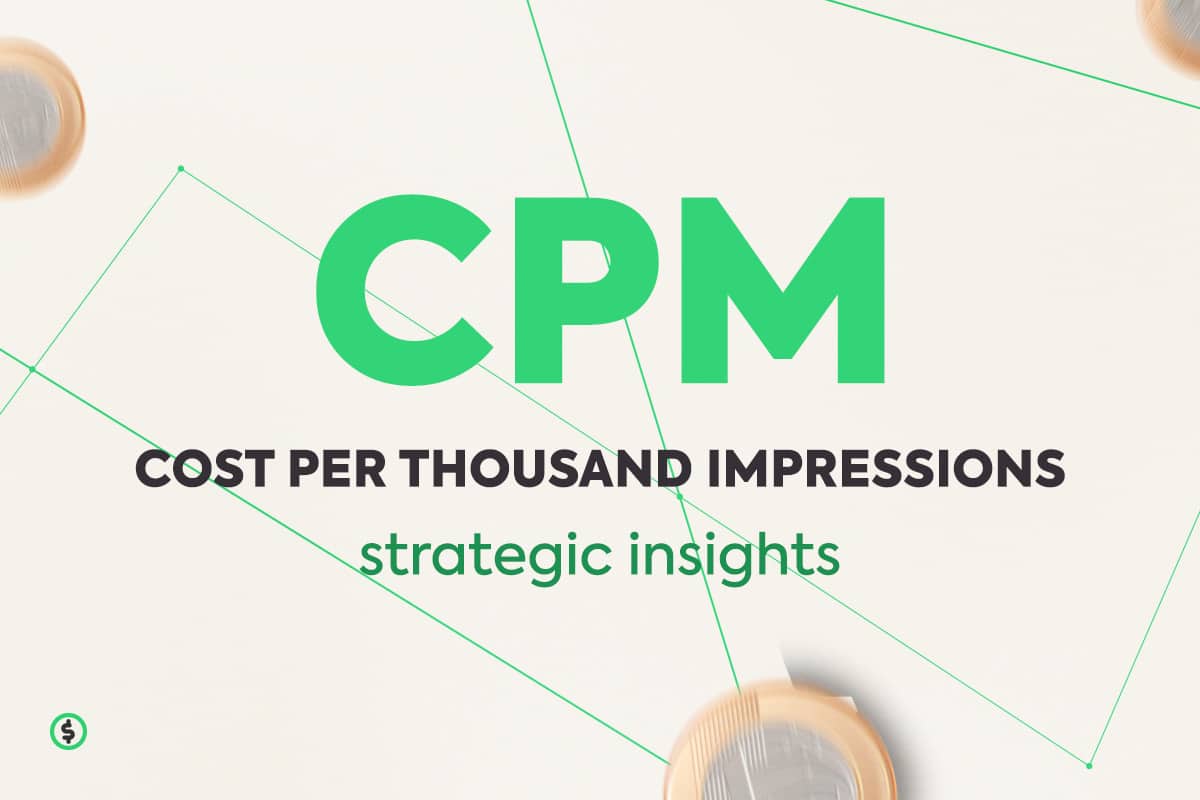Cost per Thousand (CPM), when combined with Cost per Click (CPC), Click-Through Rate (CTR), and other metrics, is the most effective way to measure campaign success in generating leads or conducting brand awareness campaigns. Since digital marketing strategies require substantial investments, it’s essential to understand all of them.
If you’re a Grumft advertising partner, welcome to our blog. If not yet, we hope this content motivates you to explore our exclusive programmatic solutions for publishers and advertisers. In this article, you’ll grasp the concept of CPM (Cost per Thousand), its advantages, disadvantages, and more.
Index
What is Cost per Thousand in marketing?
CPM, short for Cost per Thousand, is a marketing metric that refers to the price of 1,000 ad impressions on a web page. Ads focused on display are commonly served on Display Networks and Social Media feeds. Each time an ad is displayed, it counts as an impression. With CPM-based counting, advertisers pay for every thousand ad views.
What’s the purpose of Cost per Thousand?
The primary goal of CPM is ad display. Using CPM, you pay each time an Internet user sees your ad. This means you can influence people with brand recognition and consideration campaigns, where you can:
- Analyze audience generation
- Compare costs across different media resources
- Plan new stages of marketing campaigns
- Estimate results from previous ad displays
As with most digital marketing metrics, you can’t solely determine campaign success based on CPM. Besides analyzing past campaigns and comparing results with market averages, evaluate the impact of CPM on your ROI. Only this way can you discover if CPM is a suitable pricing model for your marketing efforts.
Remember that a low CPM isn’t always a positive indicator, just as, for publishers, a high CPM doesn’t always mean earning more.
How to Calculate Cost per Thousand?
The formula for CPM is straightforward. Since CPM is the cost per thousand impressions, you divide the cost by the number of impressions, and then divide that by a thousand. Therefore, the CPM formula is:
CPM = 1000 x cost per impression.
Alternatively, you can use inverted equations to find out how much you’ll pay:
Cost = CPM x impressions / 1000
Or to determine how many impressions considering your budget:
Impressions = 1000 x cost / CPM
Types of Cost per Thousand
There are three types of CPM:
- vCPM: Visible Cost per Mille
- eCPM: Effective Cost per Mille
- cPVC: Cost per Viewable Completion
CPM vs. CPC
In digital advertising, advertisers know how many people clicked or at least viewed the ad. Therefore, two metrics measure this approach to reaching consumers:
- CPC charges advertisers only for the number of times a consumer clicked on the ad.
- As explained at the beginning, CPM is a pricing model that charges advertisers for the number of times their ads were displayed to a consumer.
CPM advertising targets a broader audience, while CPC focuses on generating leads and conversions.
Advantages and Disadvantages of Cost per Thousand
The main advantages of CPM for advertisers include the potential to lower CPC if the campaign is optimized correctly and access to the extensive inventory of CPM advertising platforms.
Disadvantages of CPM include bot traffic (advertising fraud) and incorrect impression counting due to duplicated views. To mitigate these disadvantages, advertisers now have anti-fraud tools and frequency capping adjustments. However, exercising caution is necessary when using frequency capping, as higher frequency enhances conversion rates.
How to Optimize Campaign CPM?
Your goal now is to achieve the best possible CPM. To do this, continuous monitoring of campaigns, proper audience segmentation, audience expansion, A/B testing on ads, etc., are necessary.
Final Thoughts
While CPM is straightforward to calculate, remember that it’s just one of many important metrics to track campaign performance on the internet. Before choosing a pricing model, analyze the target audience, define objectives, and conduct tests. CPM offers an excellent opportunity for advertisers to create brand value and reach potential customers. Above all, rely on Grumft to support you on this journey.





